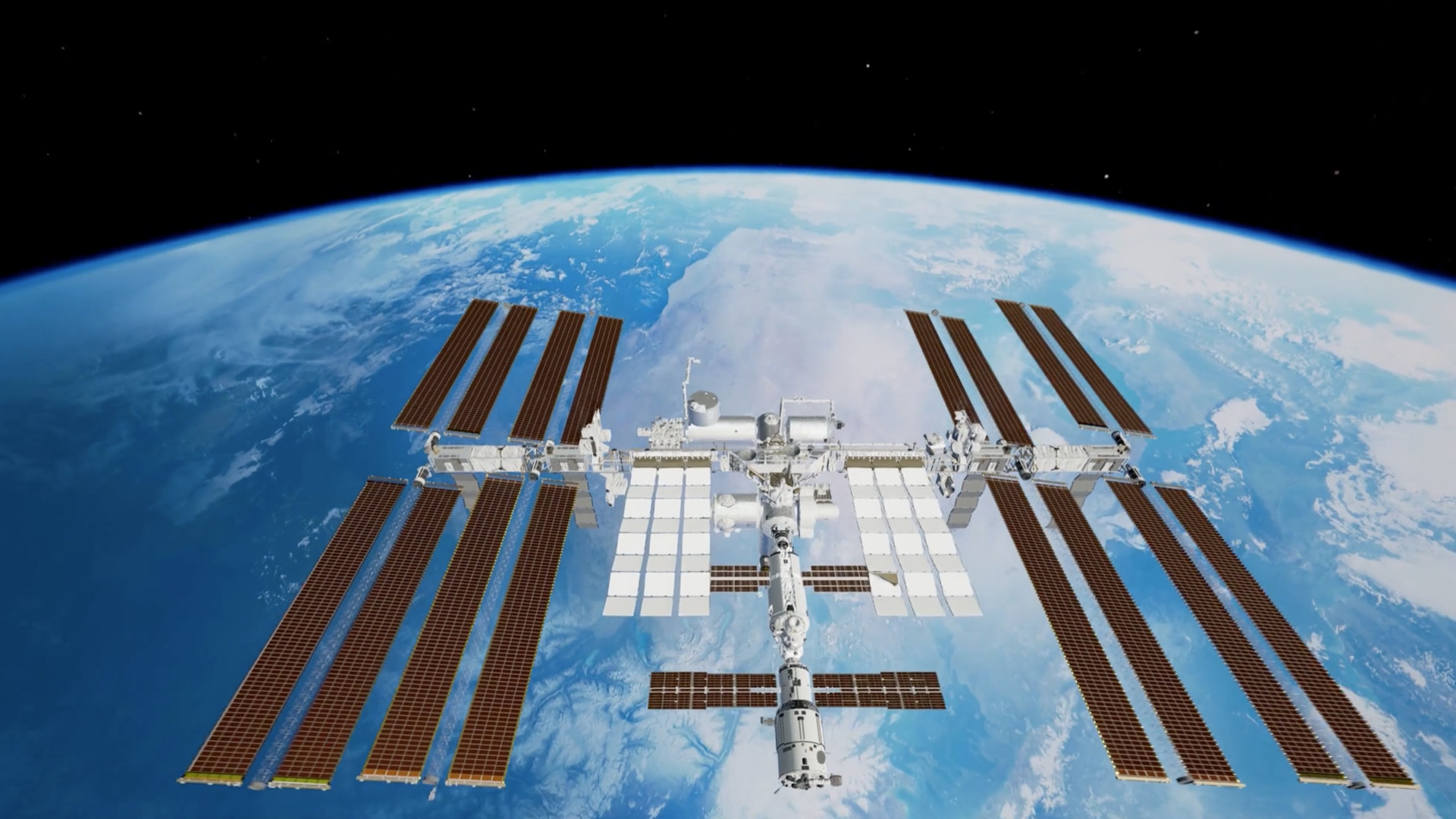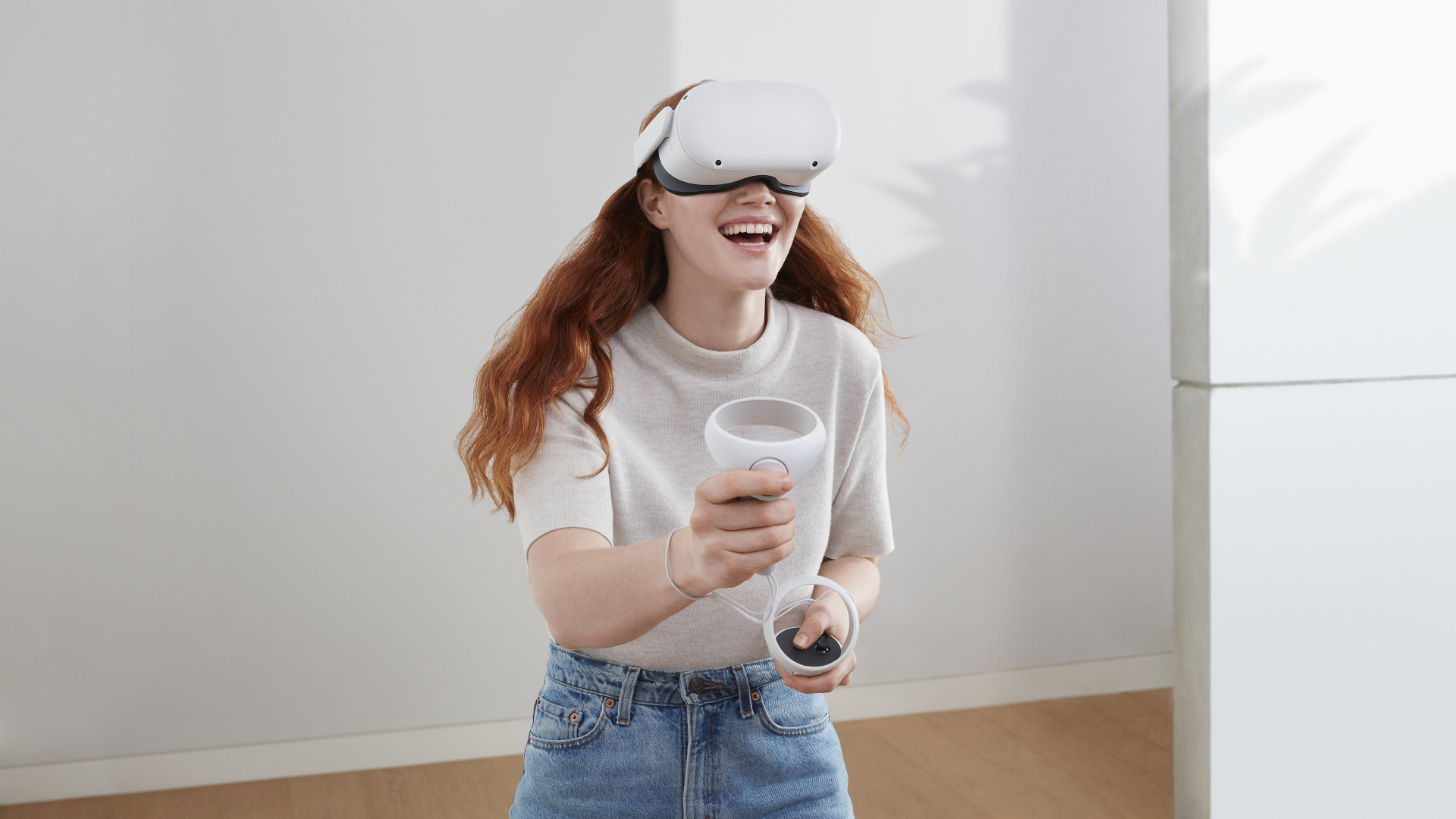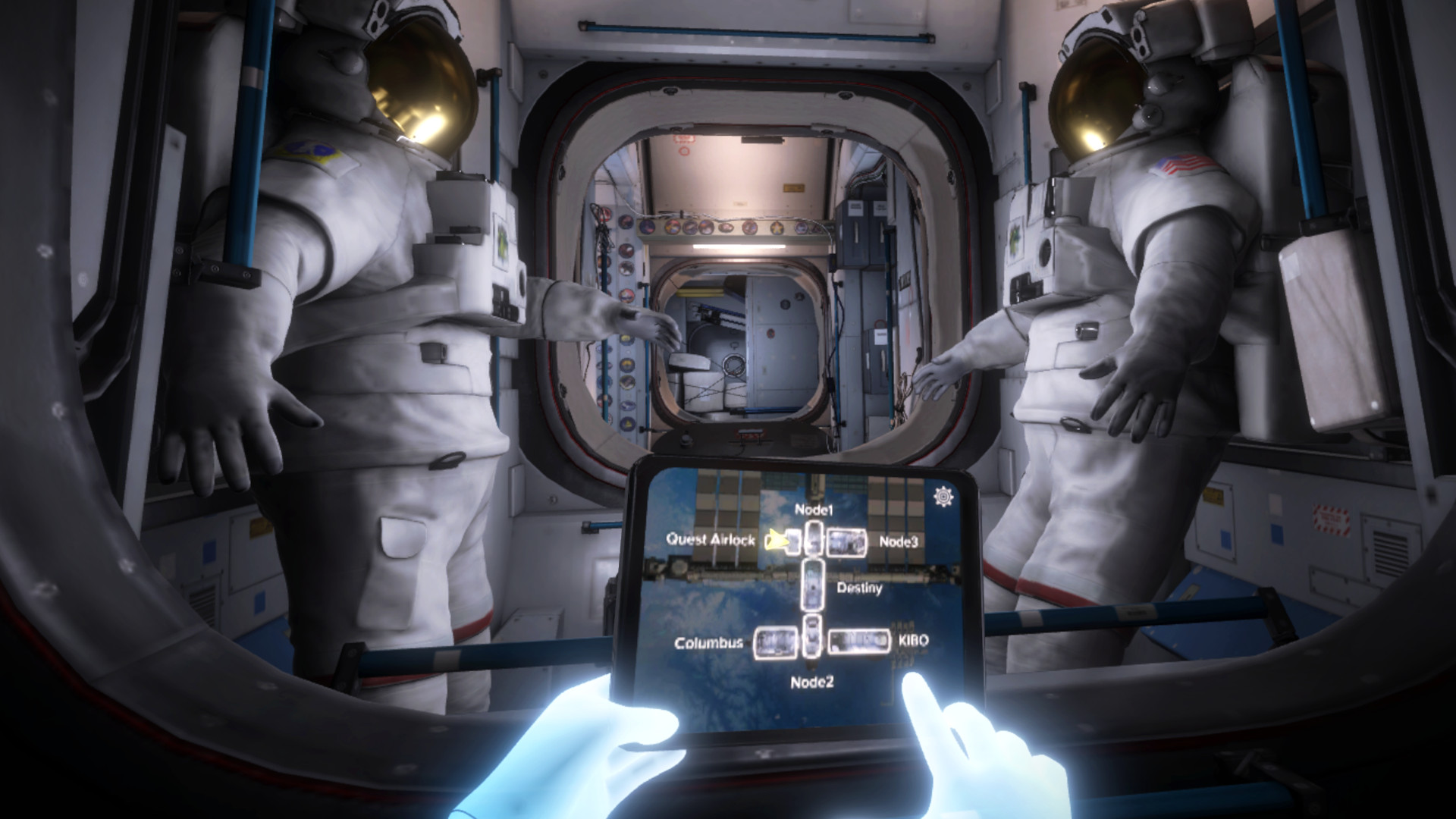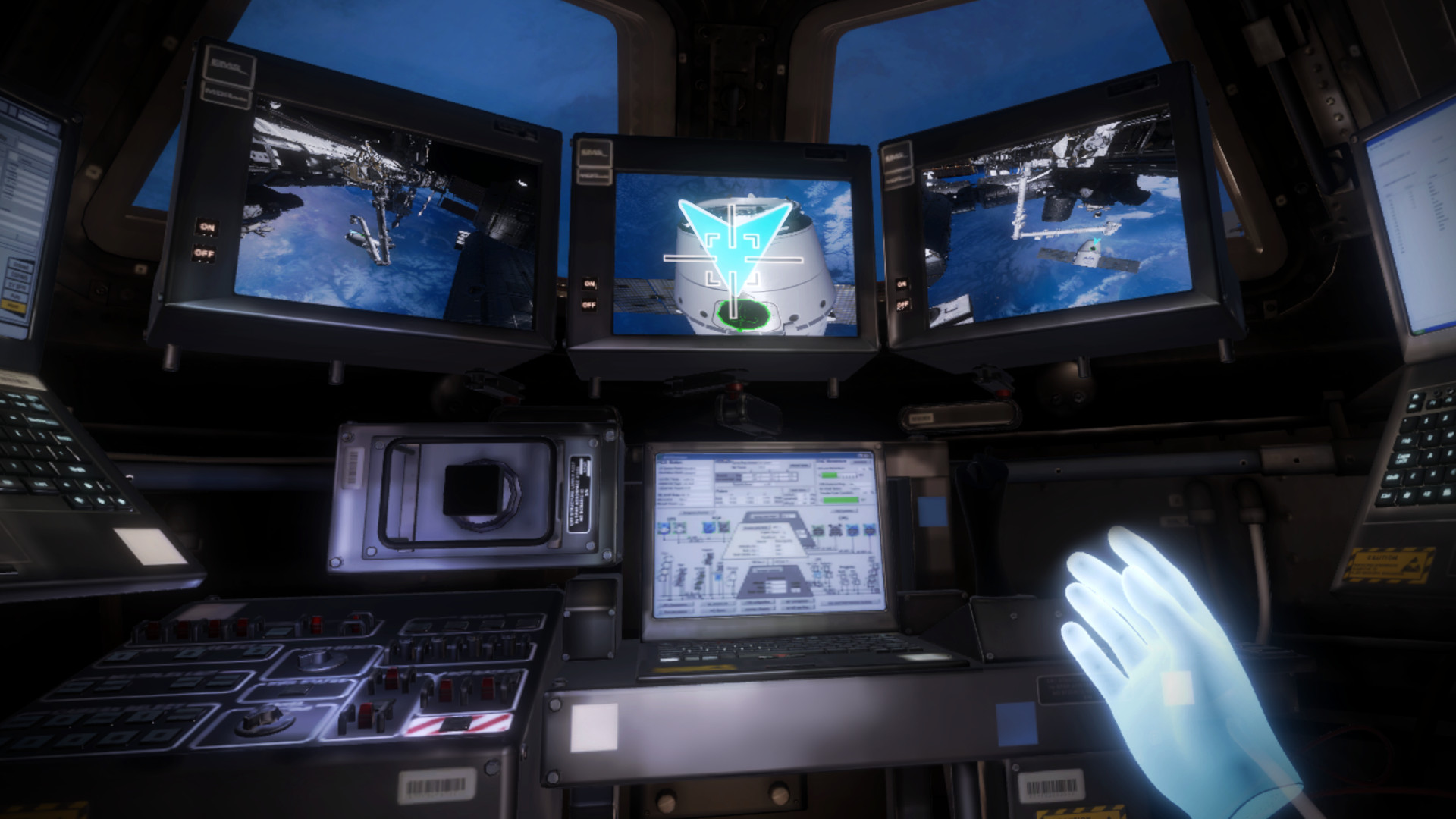This International Space Station VR experience lets you explore the ISS… and it’s as amazing as it sounds
VR allows you to reach places and achieve things that most can only dream about, including floating around the International Space Station

Think about what VR actually is. In the literal sense VR, of course, stands for ‘virtual reality’. Let’s examine that phrase for a moment, shall we? Without getting too philosophical, we can all agree on what reality is. But, it’s worth remembering that ‘virtual’ has a double meaning. While it means existing digitally, not physically, it also means ‘almost.’ ‘Nearly.’ ‘Very close.’ We promise this is going somewhere, and you’ve actually landed on Space.com and not Dictionary.com.
The idea of doing in an alternate ‘almost’ reality what you cannot in the real world is very appealing. That’s why people seek out the best VR headsets, like the PlayStation VR or Oculus Quest 2. We’re not talking about things like soaring through the sky as a bird or going on an adventure on an alien planet with futuristic weapons (although VR does allow you to do these things). Rather, we’re thinking about things that you theoretically could do in the real world, but for various reasons may never get the chance to. Mountain climbing, visiting a rainforest, racing at extreme speeds, going into space – things like that.
Virtual reality presents an opportunity to experience a wide range of otherwise unobtainable experiences quickly, easily, safely, and often for free. It’s not the real thing, of course, but it’s much closer than you could otherwise get.

Space in VR
One thing that the vast majority of people will never get the chance to do, but that a significant percentage of those same people would love to do, is become an astronaut and visit space. Without the years of mental and physical training necessary (or just… being a billionaire), the next best thing we have is virtual reality. For example, Mission: ISS offers a tantalizing taste of astronaut life, and it’s free. You can get it from the Oculus store for the Oculus Quest 2 system.
Made with help from NASA, Mission: ISS gives you a little corner of the International Space Station to explore. You’re able to navigate tight spaces in zero gravity, look outside to see the Earth hanging below, and gently bat floating items out of your way – the full astronaut experience!

There’s an educational component to the experience, most explicitly in terms of the optional pop-ups to be found. If something is highlighted in yellow when you point at it – a spacesuit, say, or a control console – you can hold the trigger to reveal text and a photo or sometimes a video. Here, a NASA astronaut will talk briefly about their experiences. It’s not all dry technical stuff, either. Have you ever wondered how an astronaut washes their hair in zero gravity? Well, if you haven’t before, you certainly are now. That’s one mystery that Mission: ISS can clear up for you.
Nonetheless, you’re free to completely ignore these if you wish, and concentrate on playing astronaut yourself. As we mentioned, this is a zero-gravity experience. You can use the left stick to push yourself forwards and backwards to make things a little easier, but you can (and will) also need to grab onto handholds to push and pull yourself along in every direction. It can take a little while to master moving around in this way. But then, of course it can, this isn’t something most people are accustomed to.
Mission: ISS - The missions
You can even go on a simulated spacewalk. Typing this, we can still remember gingerly using our propulsion unit in conjunction with the hand-led navigation we’d practiced using while inside. With the Earth looming large below us, we carefully made our way to the area we were asked to check and back, noticing a release of tension once we’d reached the airlock. It’s alarmingly easy to drift off course or to go too far, and the tether attached to an astronaut’s spacesuit isn’t indestructible…
There’s another, safer, but equally tricky mission. From the safety of the inside of the ISS, you’ll be able to operate the Canadarm 2 which is a giant robotic arm. It’s not nearly as simple as you might expect. Operating the arm involves using two sticks while observing it on two separate monitors. It’s slow, demanding, and really makes you feel like you’re doing proper astronaut work.
Simulating some of the work done on the ISS is very cool, but there’s a simple joy to be had just making your way around. The interior is packed full of detail. While it’s a shame that you can’t open up the labeled boxes of astronaut food, you’ll love taking in the fine detail added to screens, and rewarding yourself with a tricky zero-g journey through the entirety of the available area.

VR video experiences
There are plenty of other apps and games that emulate space travel or take place in space (like these best PSVR space games), as well as a huge variety of other bucket list experiences. Many cost money, albeit not that much. However, if you’re on a tight budget now that you’ve got your VR headset, another option is VR video. Again, some of these need to be paid for, but there are a huge number of free ones on YouTube (such as this spacewalk, this skydive experience, or the David Blaine balloon stunt) and within certain apps and VR storefronts.
When it comes to 360 degree VR videos, downloading is always the best option, as streaming them tends to provide a fairly low resolution. Thanks to free streaming VR videos we have (virtually) skydived, ridden a motorbike at terrifying speed, accompanied a solo explorer to the South Pole, flown above world-famous cities, traveled deep below the surface of the ocean, and much more – all this without ever having to leave your house (well, once you’ve learnt how to set up your room for VR). While VR videos aren’t strictly speaking interactive, they do allow you to look all around you while enjoying the extra immersion that VR offers by default.
VR can’t give you the money, knowledge, physique, or equipment that you may be missing for your dream experience. However, it can instantly bypass all those requirements to bring you very, very close. Why wouldn’t you take advantage of that? Things will, after all, be virtually the same.
Join our Space Forums to keep talking space on the latest missions, night sky and more! And if you have a news tip, correction or comment, let us know at: community@space.com.
Get the Space.com Newsletter
Breaking space news, the latest updates on rocket launches, skywatching events and more!
Luke has been a professional part-time freelancer since 2017, specializing in videogames but also covering entertainment, science, and technology. He is a regular contributor to PLAY and PC Gamer magazine, and has written for online outlets including Eurogamer, Space.com, and The Guardian website. He has also dabbled in published fiction, having previously written horror stories for a text chat app, and contributing to a short story anthology supporting Alzheimer's Research UK.










